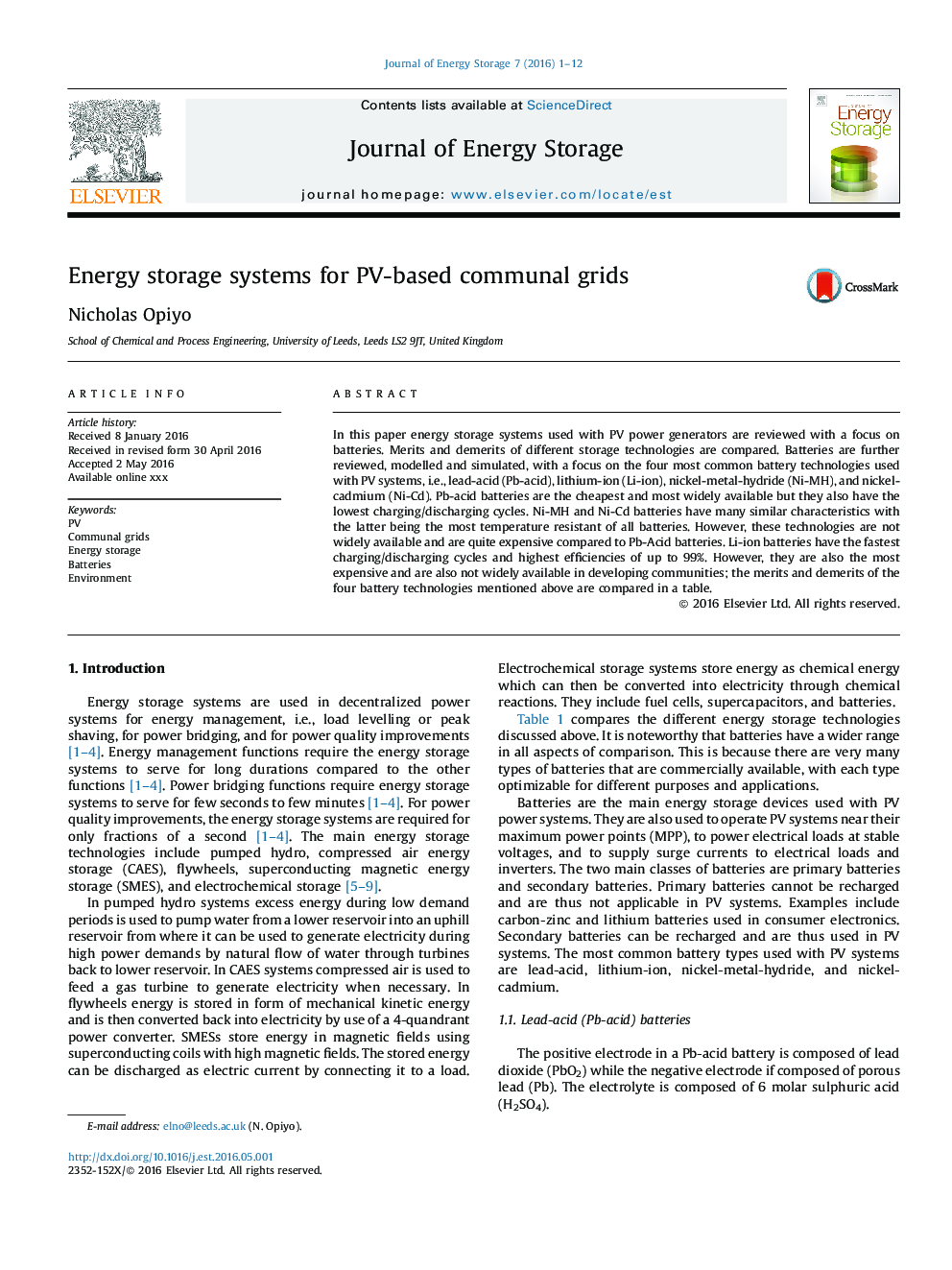| کد مقاله | کد نشریه | سال انتشار | مقاله انگلیسی | نسخه تمام متن |
|---|---|---|---|---|
| 1133057 | 1489015 | 2016 | 12 صفحه PDF | دانلود رایگان |
• Batteries are the most common types of storage devices used with PV systems.
• Pb-acid batteries are the cheapest, most versatile, and most common types of batteries.
• Li-ion batteries have higher efficiencies and faster charging/discharging cycles.
• Ni-MH and Ni-Cd batteries are the most temperature resistant.
In this paper energy storage systems used with PV power generators are reviewed with a focus on batteries. Merits and demerits of different storage technologies are compared. Batteries are further reviewed, modelled and simulated, with a focus on the four most common battery technologies used with PV systems, i.e., lead-acid (Pb-acid), lithium-ion (Li-ion), nickel-metal-hydride (Ni-MH), and nickel-cadmium (Ni-Cd). Pb-acid batteries are the cheapest and most widely available but they also have the lowest charging/discharging cycles. Ni-MH and Ni-Cd batteries have many similar characteristics with the latter being the most temperature resistant of all batteries. However, these technologies are not widely available and are quite expensive compared to Pb-Acid batteries. Li-ion batteries have the fastest charging/discharging cycles and highest efficiencies of up to 99%. However, they are also the most expensive and are also not widely available in developing communities; the merits and demerits of the four battery technologies mentioned above are compared in a table.
Journal: Journal of Energy Storage - Volume 7, August 2016, Pages 1–12
